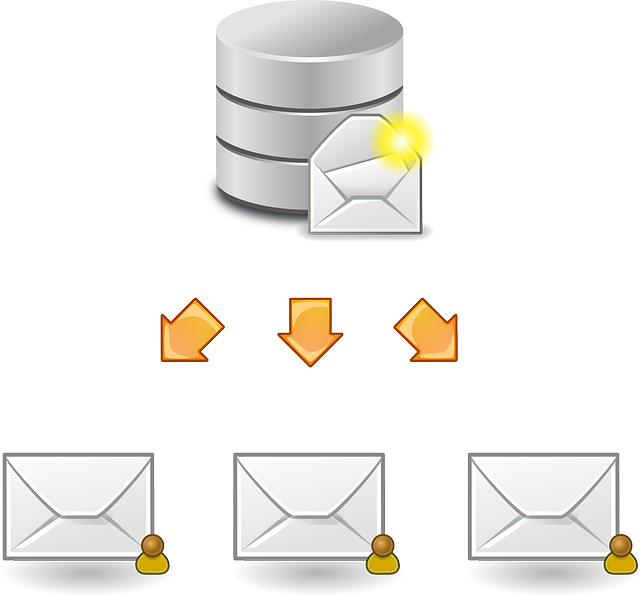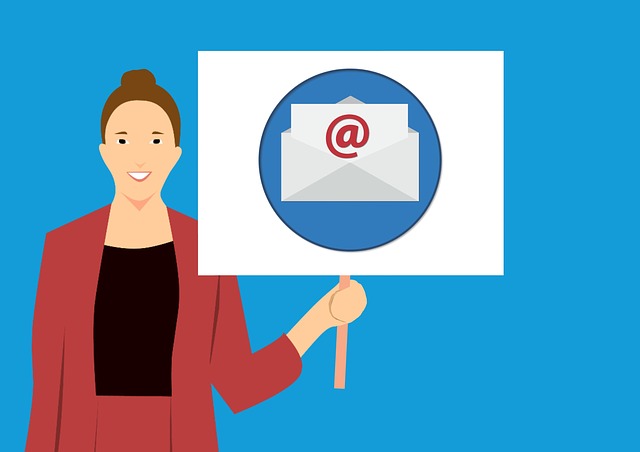Email marketing is like a powerful magnet, attracting potential volunteers to your nonprofit organization. Just as a magnet pulls in metal objects, a well-crafted email campaign can draw in individuals who are passionate about your cause and eager to make a difference.
In this article, we will explore effective email marketing strategies specifically tailored for nonprofit volunteer recruitment.
To successfully attract volunteers, it is essential to identify your target audience. By understanding their interests, motivations, and preferences, you can create compelling subject lines that grab their attention and entice them to open your emails. Once they’re hooked, personalize the content to make them feel valued and appreciated. Include engaging calls to action that inspire them to take the next step and get involved.
Building an effective email list is also crucial. Focus on quality over quantity, ensuring that you have a database of individuals who are genuinely interested in your cause.
Finally, analyze and optimize your campaigns to continuously improve your recruitment efforts. With these email marketing strategies, you’ll be well-equipped to attract dedicated volunteers who are ready to support your nonprofit’s mission.
Key Takeaways
- Target audience identification is crucial for successful volunteer recruitment
- Personalizing content based on volunteer interests increases engagement
- Engaging call to action motivates volunteers to take the next step
- Analyzing campaign metrics and conducting A/B testing refine email marketing strategy
Identifying Your Target Audience
To effectively identify your target audience, you need to understand who you’re trying to reach and what their specific needs and interests are. Understanding demographics is crucial in this process. Take the time to research and analyze the characteristics of your potential volunteers, such as their age, gender, location, and occupation.
This information will help you tailor your email marketing strategies to resonate with your target audience. Additionally, conducting surveys can provide valuable insights into their motivations and preferences. Ask questions about their previous volunteering experiences, their interests, and what they hope to gain from volunteering with your organization.
By gathering this data, you can create personalized and compelling email campaigns that speak directly to the interests and needs of your target audience. Crafting compelling subject lines will further engage your potential volunteers and entice them to open your emails, which we will discuss in the subsequent section about crafting compelling subject lines.
Crafting Compelling Subject Lines
Hey there! Want to know the secret to getting more people to open your emails? It’s all about crafting catchy subject lines that make them curious and excited to see what’s inside.
Here are three tips to help you create compelling subject lines that will grab your audience’s attention:
-
Creating a sense of urgency: Use words like ‘limited time offer’ or ‘don’t miss out’ to create a sense of urgency and encourage your audience to take immediate action.
-
Using emojis effectively: Emojis can add personality and grab attention in a crowded inbox. Use them sparingly and strategically to highlight important information or add a touch of playfulness to your subject lines.
-
Personalizing content: By using your audience’s name or referencing their previous interactions with your organization, you can make your emails feel more personalized and relevant, increasing the chances of them being opened and read.
Now that you know how to craft compelling subject lines, let’s move on to personalizing the content of your emails.
Personalizing Content
When it comes to personalizing your content for volunteer recruitment, it’s important to tailor your emails to specific volunteer interests.
By understanding what motivates your potential volunteers, you can create targeted messages that resonate with them on a deeper level.
Additionally, addressing recipients by name adds a personal touch to your emails and shows that you value their individuality.
Tailor your emails to specific volunteer interests
Crafting personalized emails that cater to the unique passions and interests of potential volunteers can make them feel like they’ve stumbled upon a treasure trove of exciting opportunities. To create a truly tailored experience, consider these strategies:
-
Personalized recommendations: Use data from previous interactions to suggest volunteer opportunities that align with the recipient’s interests and skills.
-
Volunteer testimonials: Include testimonials from current volunteers who share similar interests, showcasing the positive experiences they’ve had while volunteering.
-
Highlight relevant events or projects: Feature upcoming events or projects that are specifically related to the recipient’s stated interests or previous volunteer experiences.
-
Offer exclusive opportunities: Provide exclusive opportunities or benefits to recipients who’ve shown a particular interest in a specific area of volunteering.
By implementing these strategies, you can capture the attention and interest of potential volunteers, increasing the likelihood of their engagement.
Once you have their attention, the next step is to address recipients by name and make them feel personally connected to your organization.
Address recipients by name
Make your potential volunteers feel seen and valued by addressing them by name in your communications. Personalized greetings can go a long way in building a connection with your audience and increasing the likelihood of engagement.
When volunteers receive an email that starts with their name, it shows that you’ve taken the time to acknowledge them as an individual. This small gesture can make a big difference in capturing their attention and encouraging them to read on. Additionally, email personalization can help create a sense of trust and familiarity, making your potential volunteers more likely to respond positively to your call to action.
Speaking of which, a strong and engaging call to action is essential in motivating volunteers to take the next step towards joining your organization.
Engaging Call to Action
Get involved now and make a difference by clicking on the exciting call to action in our email! Creating urgency is key when it comes to engaging volunteers for your nonprofit. Use phrases like ‘Limited time offer’ or ‘Act now’ to motivate recipients to take action.
Leverage social proof by highlighting the impact your organization has already made and the number of people who’ve already joined your cause. Seeing that others have already taken part will encourage potential volunteers to join as well.
Keep your call to action clear and easy to find, using contrasting colors and bold fonts. Make sure the button stands out and is easily clickable on both desktop and mobile devices.
Next, we’ll discuss building an effective email list, which is vital for reaching more potential volunteers.
Building an Effective Email List
Developing a strong and targeted database is crucial for maximizing outreach potential and increasing the chances of attracting enthusiastic individuals to support your cause. One effective strategy is segmentation, where you divide your email list into different groups based on specific criteria such as interests, demographics, or donation history. This allows you to tailor your messages and appeals to each segment, increasing the likelihood of engagement and conversion. Another useful tool is email automation, which saves time and ensures timely communication. With automation, you can set up welcome emails for new subscribers, send personalized thank-you notes, or even schedule reminders for upcoming events. By implementing segmentation strategies and utilizing email automation, you can streamline your volunteer recruitment efforts and connect with potential supporters on a more personalized level. Moving forward, let’s explore how analyzing and optimizing campaigns can further enhance your email marketing efforts.
Analyzing and Optimizing Campaigns
Once you’ve launched your email campaigns, it’s time to dive into the data and uncover the hidden gems that will propel your nonprofit’s mission forward.
Analyzing campaign metrics is crucial to understanding the effectiveness of your email marketing strategy. Look at key metrics such as open rates, click-through rates, and conversion rates to gauge the engagement levels of your audience. Identify patterns and trends to determine what resonates with your supporters and what doesn’t.
To optimize your campaigns, consider conducting A/B testing. This involves creating two versions of your email with slight variations in subject lines, content, or calls to action. Send each version to a small segment of your email list and compare the results.
A/B testing allows you to identify the most effective elements and make data-driven decisions to improve future campaigns. Don’t overlook the power of analyzing campaign metrics and conducting A/B testing to refine your email marketing strategy and maximize your impact.
Frequently Asked Questions
How can I effectively segment my email list to target specific groups of potential volunteers?
To effectively segment your email list and target specific groups of potential volunteers, you can unlock a world of possibilities. Segmentation benefits include tailoring your messaging to resonate with each group’s unique interests and motivations. By speaking directly to their needs and aspirations, you increase the chances of attracting their attention and inspiring them to take action.
Targeted messaging allows you to personalize your communication, building trust and establishing a stronger connection with your potential volunteers.
What are some creative ways to grab the attention of recipients with my subject lines?
Grabbing the attention of recipients with attention-grabbing subject lines is crucial. Personalization is key to standing out from the crowd. Instead of using generic subject lines like ‘Volunteer Opportunity,’ try something more specific and intriguing like ‘Make a Difference in Your Community Today!’
Also, consider using the recipient’s name or location to make the subject line more personalized. This approach will pique their curiosity and increase the chances of them opening your email.
Is it necessary to personalize every email, or are there certain situations where a more generic approach is appropriate?
When it comes to personalizing emails for nonprofit volunteer recruitment, finding the right balance is key.
While a generic approach may seem efficient, it lacks the personal touch needed to truly engage recipients.
Personalization allows you to connect on a deeper level, showing your appreciation for their unique interests and skills.
By testing and analyzing email engagement metrics, you can determine the effectiveness of personalization in volunteer recruitment.
So don’t underestimate the power of a personalized email – it can make all the difference in attracting dedicated volunteers.
What are some innovative call-to-action techniques that have proven successful in nonprofit volunteer recruitment emails?
To maximize success in nonprofit volunteer recruitment emails, incorporate gamification strategies and social media integration. Use innovative call-to-action techniques, such as creating interactive games or challenges related to your cause. Encourage volunteers to share their progress and invite friends to participate through social media integration.
By making the volunteer experience fun and interactive, you can increase engagement and attract more volunteers. Be persuasive, concise, and professional in your approach to motivate action.
How can I ensure that my email list is constantly growing and attracting new potential volunteers?
To ensure constant email list growth and attract new potential volunteers, focus on cultivating a thriving community. Encourage current volunteers to share their positive experiences with others, leveraging the power of word-of-mouth.
Offer incentives, such as exclusive content or early access to events, to entice new sign-ups. Create engaging and visually appealing email campaigns that highlight the impact of volunteering.
Optimize your website and social media channels for easy sign-ups, and regularly promote your volunteer opportunities to expand your reach.
Conclusion
In conclusion, implementing effective email marketing strategies is crucial for nonprofit organizations seeking to recruit volunteers.
By identifying your target audience, crafting compelling subject lines, personalizing content, and including engaging calls to action, you can increase the success of your recruitment efforts.
Additionally, building an effective email list and analyzing and optimizing your campaigns will further enhance your volunteer recruitment efforts.
Remember, email marketing is like a key that unlocks the door to a world of potential volunteers, so make sure to use it wisely and strategically.








